Have you ever wished you could grow your food and flowers but didn’t have the space? If you’ve ever felt limited by a lack of horizontal gardening space, vertical gardening might be your solution.
Vertical gardening is a type of gardening where plants grow vertically, as opposed to horizontally. This technique can grow various plants, including vegetables, fruits, herbs, and flowers. It is a great way to make the most of a small space.
In this article, we’ll show you how to start your vertical garden indoors and out. We will also walk you through the 20 Amazing Ideas For Vertical Gardening.
What is Vertical Gardening?
Vertical gardening is a type of gardening where plants are grown vertically on supports, usually without soil. This can be done in some ways, including using trellises, stakes, or posts, training climbing plants, growing hanging plants, or utilizing containers placed on shelves.
The main benefits of vertical gardening are that it saves space, is easy to set up and maintain, and can add a beautiful aesthetic to any home or garden. It is also a great way to grow plants that might otherwise be difficult to grow in small spaces, such as strawberries, tomatoes, and herbs.
Vertical gardening is a great way to grow plants in a small space, and it can also create privacy screens, windbreaks, and noise barriers.
There are also other benefits to vertical gardening, including:
- Increased yields of fruits and vegetables
- Reduced pests and diseases
- Improved air quality
- Enhanced aesthetic appeal
- Increased property value
How to Start a Vertical Garden?
If you are interested in starting a vertical garden, you should keep a few things in mind.
- First, it is crucial to choose the right location. Vertical gardens can be placed indoors or outdoors, but they need to be in an area that receives enough sunlight.
- Second, you will need to choose the right plants. Not all plants are suitable for vertical gardening, so it is important to research beforehand.
- Finally, you will need to decide on the support system you want to use. There are various options available, so it is essential to find one that best suits your needs.
Choosing the Right Location
When selecting a location for your vertical garden, it is vital to consider the available space and the amount of sunlight the area receives. Vertical gardens can be placed indoors or outdoors, but ensuring the area receives enough sunlight is essential.
If you are growing plants that need full sun, such as tomatoes, it is best to place your garden in an outdoor location that receives at least six hours of direct sunlight per day. If you are growing plants that can tolerate partial shade, such as herbs, you can place your garden indoors or in an outdoor location that receives less than six hours of direct sunlight daily.
It is also important to consider the space available when selecting a location for your vertical garden. Vertical gardens can be large or small, but it is vital to have enough space to accommodate the plants you want to grow. If you are limited in space, you can consider growing plants in pots or barrels instead of in the ground.
Choosing the Right Plants
Not all plants are suitable for vertical gardening; some require more space than others, and some do not do well when grown in containers. When choosing plants for your vertical garden, you must consider the available space, the type of support you are using, and the amount of sunlight the area receives.
Some of the best plants for vertical gardens include:
These plants are all relatively small and do not require much-growing space. They also do well in containers and can tolerate being grown in shady areas.
When choosing plants for your vertical garden, it is also important to consider the type of support you are using. Some plants, such as tomatoes, require staking or other support systems to grow properly. Other plants, such as cucumbers and strawberries, can be grown without support.
Finally, choosing plants that can tolerate being grown in shady areas is important. Some plants need full sun to thrive, but others do fine in partial shade. Herbs are a good choice for shady areas, as they do not need much sunlight to grow well.
Creating a Vertical Garden
Now that you have chosen the right plants and the perfect location for your vertical garden, it is time to start creating your garden.
The first step is to choose the type of support you want to use. Many supports are available, such as trellises, stakes, containers, or hanging baskets. Once you have chosen support, it is time to plant your plants.
When planting your plants, it is crucial to ensure they are at the correct depth. If the plants are too deep, they may not be able to get the nutrients they need to grow. If the plants are too shallow, they may not have enough roots to support their growth.
It is also important to water your plants regularly. Vertical gardens can be difficult to water, so it is important to make sure you water them deeply and evenly. Once your garden is established, you can fertilize your plants every few weeks to help them grow even more.
With a little time and effort, you can create a beautiful and bountiful vertical garden that will provide you with fresh fruits, vegetables, and herbs for many years to come.
What are Some Tips for Creating a Successful Vertical Garden?
Ready to get started with vertical gardening? Here are a few tips to help you create a successful garden:
- Choose the Right Plants: Not all plants will do well in a vertical garden. When choosing plants, look for compact plants with a small root system. Good options include herbs, leafy greens, and small flowering plants.
- Provide Support: Plants will need something to climb on, or they will flop over. Trellises, wires, and netting are all good options for providing support. Be sure to choose a material that is sturdy enough to support the weight of the plants.
- Water Regularly: Vertical gardens can dry out quickly, so watering them regularly is essential. Water in the morning so the plants have time to absorb the moisture before the heat of the day sets in.
- Fertilize as needed : Plants in a vertical garden need to be fertilized more often than those in a traditional garden because they grow in a confined space. Use a liquid fertilizer and apply it every two weeks or as needed.
- Prune as needed : Pruning is important for keeping plants healthy and helping them to produce more flowers and fruit. When pruning, cut back to a bud or node so that new growth can emerge.
With these tips, you’ll be on your way to creating a beautiful and bountiful vertical garden.
20 Stunning Vertical Gardening Ideas
Here are 20 creative vertical gardening ideas that you can implement right now.
1. Reusing Plastic Bottles
Nothing screams’ sustainable’ more than this vertical garden design that uses plastic bottles to hold plants. Embracing the three R’s (recycle, reuse and reduce), this eco-friendly and sustainable design layout can be put together using items you can find around the house, such as bottles and strings. Just don’t forget to poke tiny holes in the bottles to let the plant breathe and allow some of the excess water to be able to drain out.

2. Hanging Pot Garden
A hanging pot garden is an inexpensive and classic way to showcase your beautiful plants using $5 pots that can be bought from any plant nursery or gardening store. You can add your creative twist by painting them using either solid colors or patterns. Make sure that the rope or wire you use to tie and hang them is strong enough to support their weight for long periods.
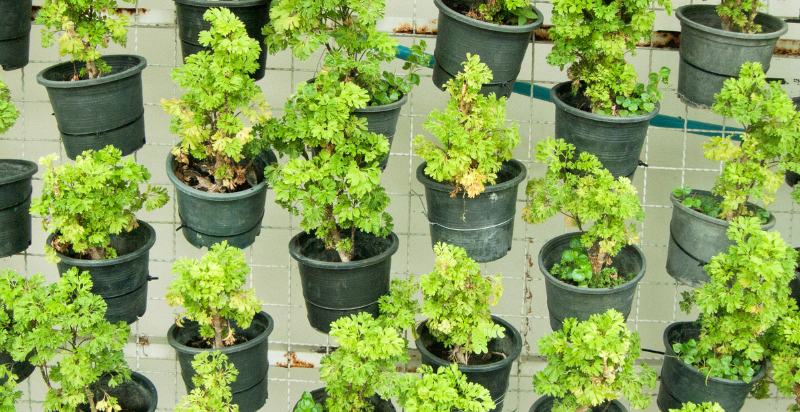
3. Rack-Styled Vertical Garden
A rack-styled vertical garden is the perfect example of a marriage between the indoors and outdoors – where interior design meets the gardening world. A perfect blend of rustic and sturdy wood racks/shelves and colorful plants filled with soil to hold plants in them. You can even get creative and use bedroom furniture you don’t need anymore to create this furniture-inspired vertical garden.
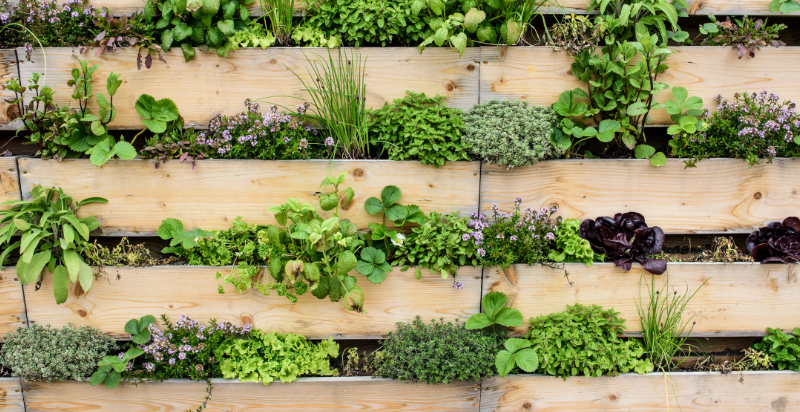
4. Vertical Garden Tower
A vertical garden tower is a dramatic take on the vertical garden. If you want to create a vertical garden that does not occupy much land space horizontally but still has many pots and plants to work with – the vertical garden tower is your saving grace. Perfect for outdoors and can even work well in kitchens / indoor spaces with high roofs.
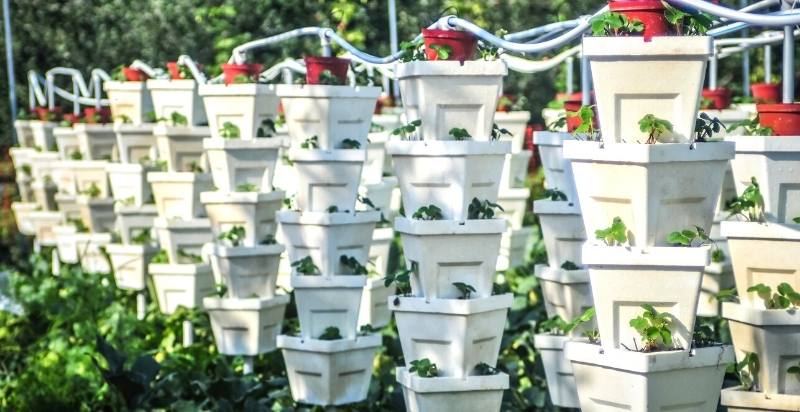
5. Using Tin Cans for your Vertical Garden
Another environmentally friendly concept for the vertical garden is making use of tin cans around the house as pots for your plants. Lightweight and durable, these will last you a very long time. What’s more? They also help you by saving costs on buying pots. Kick up a notch by wrapping them in fancy printed paper or paint.
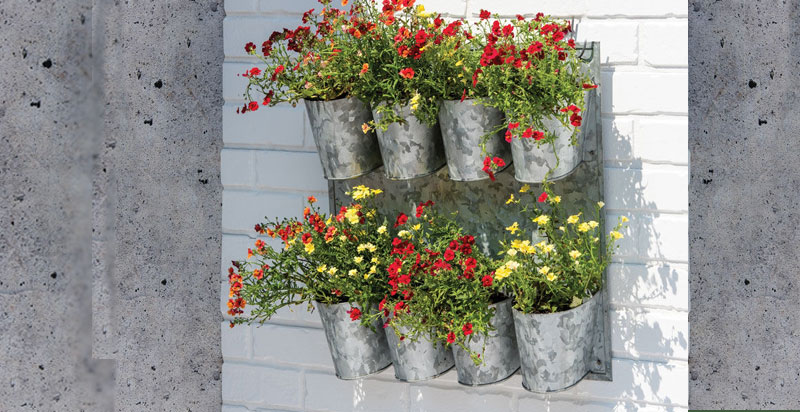
6. Hydroponic Vertical Gardening
Hydroponic gardening is the system of being able to grow plants in water and nutrient-rich soil. You can use household items such as faucets, spray bottles, rubber pipes, and pots to create such a system for your garden. Use remains from the kitchen to mix up fertilizer and place the plants in open sunlight.

7. Cottage-Inspired Vertical Garden
The cottage inspired vertical garden makes use of a combination of pots both on the ground and hung using rope against an earthy background such as an unpainted wall. Add in colorful plants along with tables, and chairs for a pop of color. Experiment with different colors such as yellow, red, lilac and orange to figure out which palette combination works best for your garden.
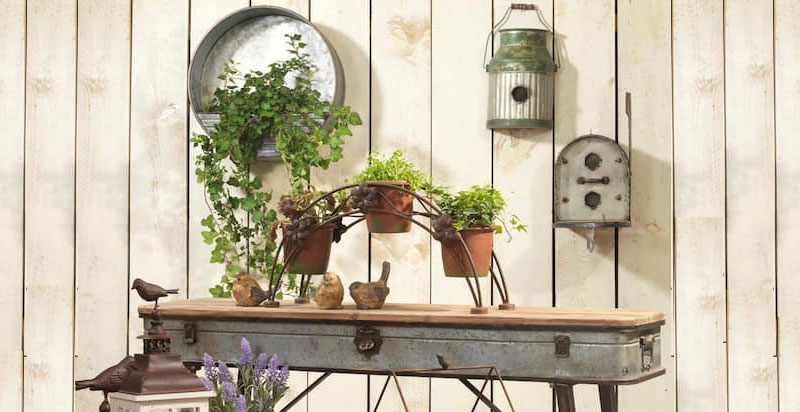
8. Plywood Vertical Garden
Plywood structures are suitable for creating vertical gardens because these sturdy structures can stand the weight of even your heaviest plants. Wooden boards pressed together using glue can be used to create durable structures which can serve as a home for your plants. Shave away the corners/edges and add in engravings to make your vertical garden stand out.
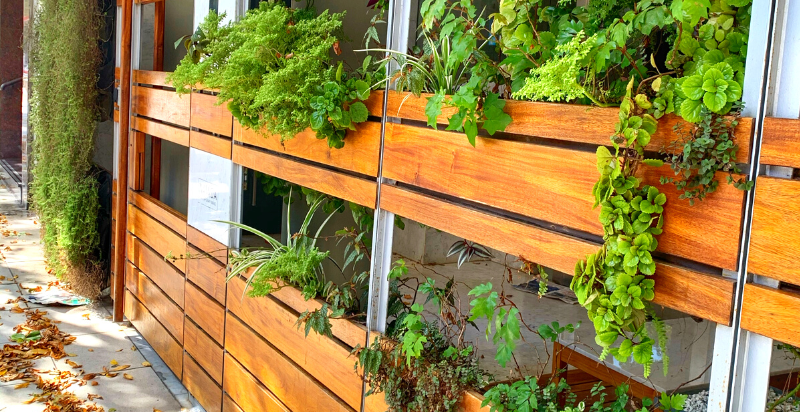
9. Modern Farmhouse-Inspired Vertical Garden
This garden idea is a contemporary take on a farmhouse setting, where it incorporates the sturdy elements of a farmhouse such as traditionally designed pots but instead places them in an arrangement that adds a modern flair to it. Use toned-down colors such as light shades of grey and black to add a rustic effect.
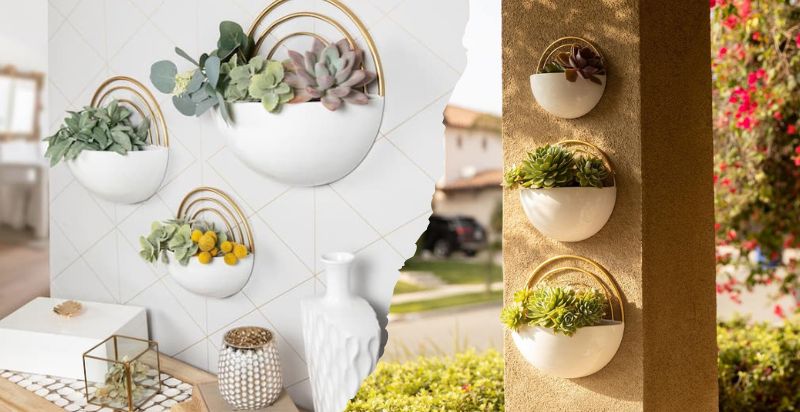
10. Fenced Vertical Garden
A fence-themed garden is another classic way for you to be able to show off your plants in a minimalist manner. The key here is to use a fence-shaped or hedge-like structure that sets the scene for your plants to be placed in. Make sure that your pots and plant containers are adequately spaced away from one another so that it doesn’t get too crowded. Avoid using too many plants too!
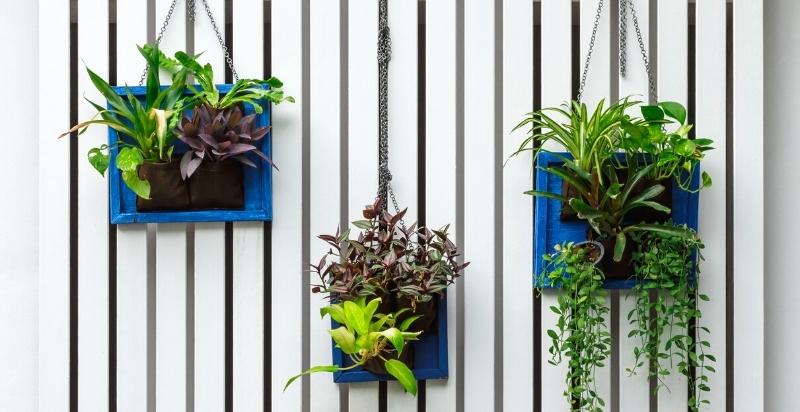
11. Window-Focused Vertical Garden
You can also build an entire vertical garden based on the location of an open window. Make sure, however that the window is placed somewhere the plants can get enough sunlight. Place a few pots on the window ledge itself. Use ropes and pots to add more plants and pots around it. Just remember that the star of the show is the window!
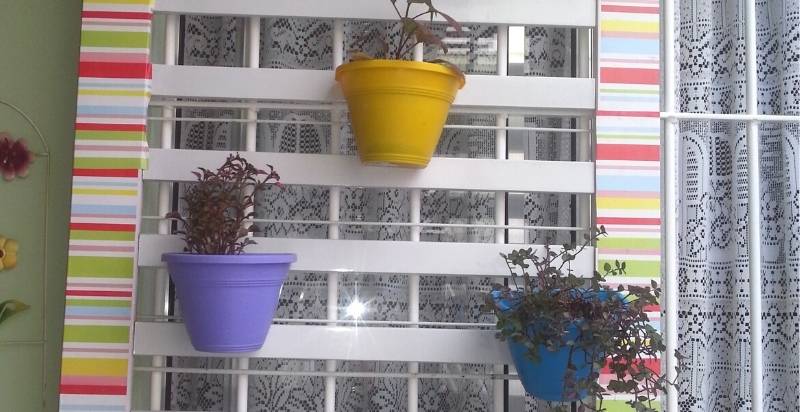
12. Grid-Based Vertical Garden
The grid-styled vertical garden offers a neat and organized look for your outdoor space. The grid structure can be placed behind the plants or on the plants as well, where it neatly encapsulates them in ‘box-like’ structures.

13. Parkside Living Wall Vertical Gardening
The Parkside living wall based vertical garden is suitable for both indoors and outdoors. By using the right size for the container, you can even place it in your own kitchen! The metal-based containers offer a sturdy environment for the plants to get comfortable in. Just remember to resist the urge to clump together too many plants in the same space – that doesn’t look aesthetic at all.
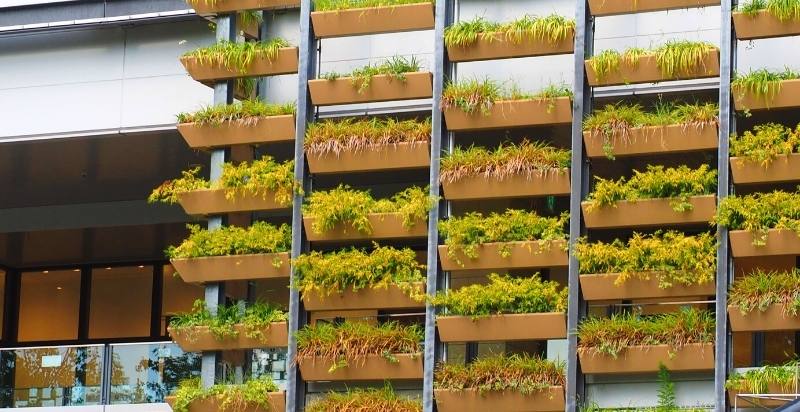
14. Vertical Garden Created Using Steps
Here is a stair-step-inspired vertical garden where you have two options. You can use steps naturally built into a wall structure with pots placed on them. Alternatively, you could have wooden step structures custom-built for your wall so that you may place plants on it. With the second option, you can customize the dimensions to perfectly suit your indoor or outdoor space.

15. Hanging basket garden
Hanging baskets offer a cottage-themed aesthetic that can be very pleasing to look at. Find baskets built from material that is strong enough to hold your plants for long time periods without unraveling. Don’t splash water over them carelessly, it will make the baskets damp and soft. You can hang these near the top half of your wall up till the roof.
Certain plants grow in baskets better than others.
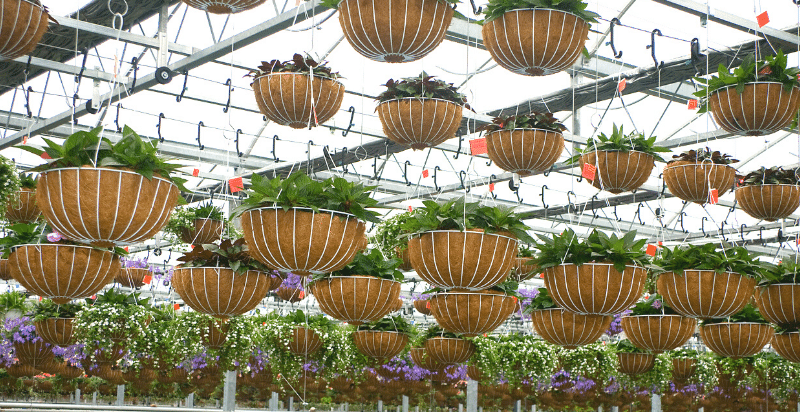
16. Roof Hanging Garden
If you can’t afford to get a wooden structure build or a trellis installed in your indoor/outdoor space, then you need to get creative! Look for roof edges and corners – ideally atop an empty wall – that you can use to start building your vertical garden. This is one of the most traditional and effective ways of creating a vertical garden without expending too many resources.
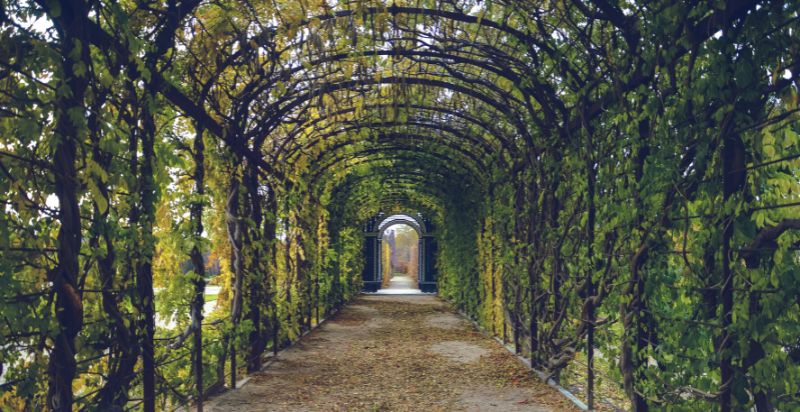
17. Ladder For Supporting Your Vertical Garden
The gardening ladder can become your structure for support if you don’t want to get a trellis or custom wooden landscape changes to your space. This quaint aesthetic is both resourceful and appealing. Place rectangular pots near the foot of the gardening ladder and adorn the steps with plants in pots and other containers. A groovy way to build a vertical garden!
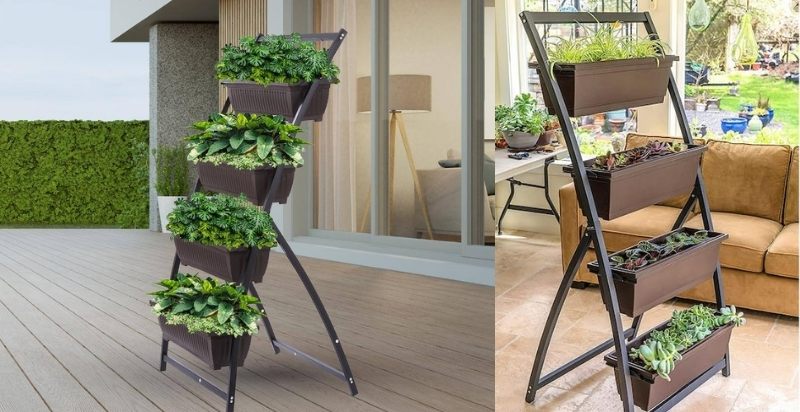
18. Terrarium Planter For Your Vertical Garden
A terrarium planter is one of the most sophisticated ways to build a vertical garden. One that boasts elegance and simplicity. Whatever plant you like can be displayed in these glass orb terrariums to give them a unique touch. The good news is that you can choose from various plants that you will find suitable to live in your vertical terrarium garden.
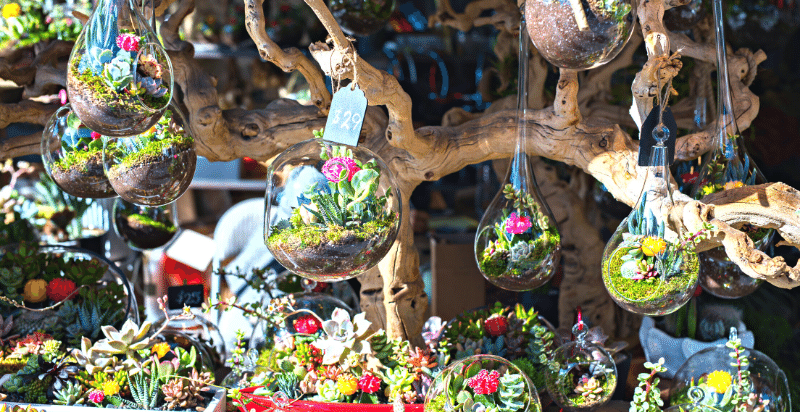
19. Photo Frame-Inspired Vertical Garden
You can use old photo frames around the house to cover up a fence or any other structure you want to be populated with plants. Cover them with potted plants or flowers to add an interesting touch to your vertical garden. Make sure that the width of your photo frame is wide enough to be able to support the weight of your plant. Heavy plants are not suitable for this vertical garden style.
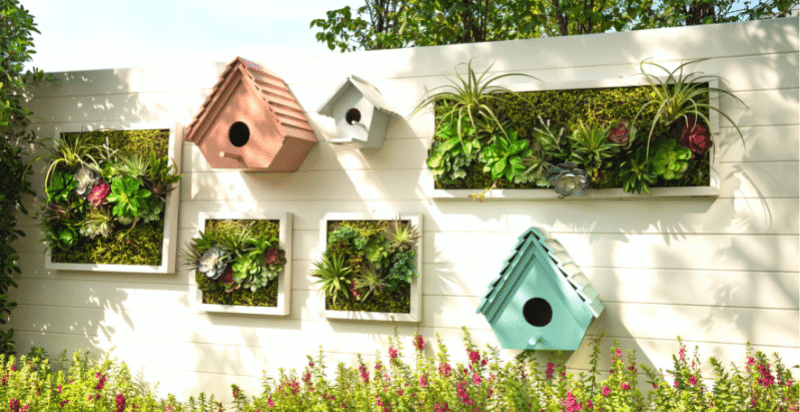
20. Using Crates to Start Your Vertical Garden
You can use empty crates as a container for placing your planted pots, which can effectively serve as the base for your vertical garden. Create fun structures like pyramids. Don’t stack too many on top, which may cause them to topple over. Keep the plant firmly against a wall.

Conclusion:
Vertical gardening are safe, sustainable, diverse, and efficient ways of growing various plants outdoors and indoors. They are perfect for small spaces and can be a great addition to any home.
Building a vertical garden is a fun and creative way to spruce up any space – be it your home, office, or even balcony! Not only do they look good, but vertical gardens are also great for purifying the air around you. So what are you waiting for? Start planning your very own vertical garden today!
- Everything You Wanted to Know About Red Tamarillos - June 2, 2025
- A Guide to Tulips: Everything You Need to Know & More… - June 2, 2025
- Guanabana: Description, Flavor, Benefits, And Uses - May 27, 2025

11 thoughts on “20 Amazing Ideas For Vertical Garden”
Comments are closed.